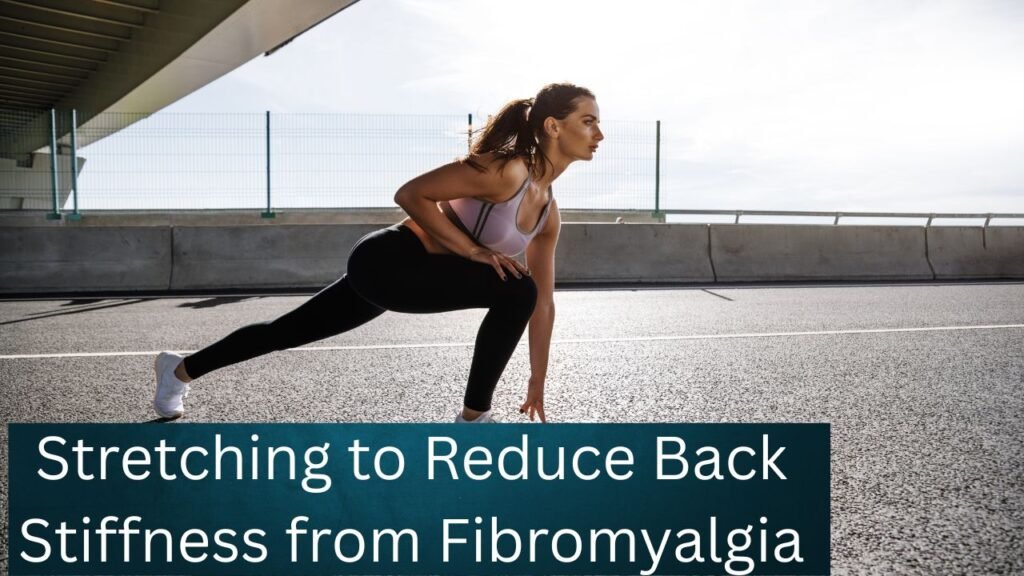Fibromyalgia causes widespread pain, stiffness, and fatigue, making movement difficult. The back is often one of the most affected areas. Tight muscles and tender points contribute to discomfort, limiting flexibility. Gentle stretching can help relieve stiffness, improve mobility, and enhance overall well-being.

Why Stretching Helps Fibromyalgia-Related Back Stiffness
Fibromyalgia affects how the brain processes pain signals, leading to muscle tension. Stretching provides several benefits:
- Loosens tight muscles
- Improves circulation
- Reduces stiffness
- Enhances range of motion
- Promotes relaxation
Unlike high-impact exercises, stretching is gentle and safe. It also helps manage stress, which can worsen fibromyalgia symptoms.
Best Stretches for Back Stiffness from Fibromyalgia
These stretches target key areas of the back to relieve tension and improve flexibility. Perform them daily for the best results.
1. Child’s Pose
This stretch relaxes the lower back and gently elongates the spine.
How to Do It:
- Kneel on the floor with knees slightly apart.
- Sit back on your heels and extend your arms forward.
- Lower your chest toward the floor and hold for 30 seconds.
Why It Helps: It reduces lower back stiffness and promotes relaxation.
2. Seated Forward Bend
This stretch targets the spine and hamstrings, both of which can become tight.
How to Do It:
- Sit on the floor with legs extended straight.
- Hinge at your hips and reach for your toes.
- Hold for 20-30 seconds without forcing the stretch.
Why It Helps: It gently elongates the spine and improves flexibility.
3. Cat-Cow Stretch
A dynamic movement that keeps the spine flexible and eases stiffness.
How to Do It:
- Get on all fours with hands under shoulders and knees under hips.
- Inhale, arch your back, and lift your head (Cow Pose).
- Exhale, round your back, and tuck your chin (Cat Pose).
- Repeat 8-10 times.
Why It Helps: It improves spinal mobility and reduces tension.
4. Standing Side Stretch
This stretch relieves tightness in the upper and mid-back.
How to Do It:
- Stand with feet shoulder-width apart.
- Raise your right arm overhead and lean to the left.
- Hold for 20-30 seconds, then switch sides.
Why It Helps: It increases lateral spinal movement and loosens tight muscles.
5. Knee-to-Chest Stretch
A gentle way to relieve lower back stiffness and improve flexibility.
How to Do It:
- Lie on your back with knees bent.
- Pull one knee toward your chest, holding it with both hands.
- Hold for 20 seconds, then switch sides.
Why It Helps: It stretches the lower back and improves circulation.
Additional Tips for Managing Back Stiffness from Fibromyalgia
Stretching is most effective when combined with other strategies. Consider these additional tips:
1. Move Regularly
Avoid prolonged periods of inactivity. Gentle movement throughout the day prevents stiffness from worsening.
2. Use Heat Therapy
Applying a warm compress or taking a warm bath before stretching can relax muscles and enhance flexibility.
3. Practice Deep Breathing
Incorporating slow, deep breaths during stretching helps relax tense muscles and reduces stress.
4. Maintain Good Posture
Poor posture adds strain to the back. Use ergonomic chairs and adjust your workstation for proper spinal alignment.
5. Listen to Your Body
Stretch within a comfortable range. Avoid overexertion, and modify stretches as needed.
When to Seek Medical Advice
If stretching increases pain or stiffness, consult a healthcare provider. A physical therapist can recommend personalized exercises based on your condition.
Final Thoughts
Fibromyalgia-related back stiffness can be managed with gentle, consistent stretching. These movements improve flexibility, reduce tension, and enhance overall comfort. Make stretching a part of your daily routine to maintain mobility and reduce discomfort over time.